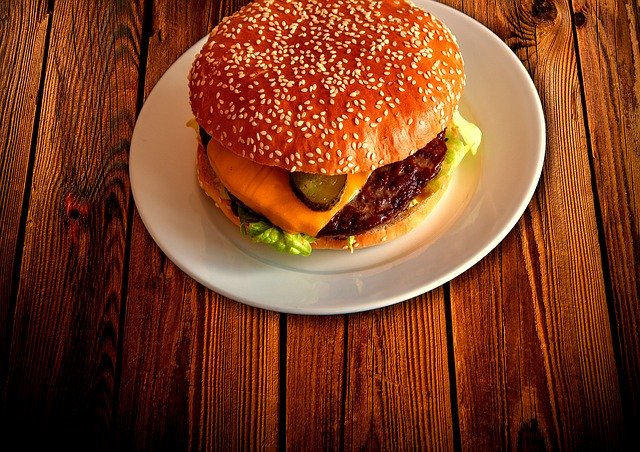New research attempts to develop a quantitative measure for hyper-palatable foods.
Many modern humans eat for hedonic reasons, using food to stimulate reward pathways in the brain.
Often, stimulating these reward pathways is able to override the satiety that should result from food consumption. Two of the major consequences of this development are the rise in obesity levels and the exploitation of hedonic consumption by the food industry.
The food industry has recognized a simple fact; humans no longer eat solely as a means of survival.
We have seen the emergence of “food formulas”, combining known palatable ingredients (fats, sugars, carbohydrates, and sodium) in specific ratios designed to maximize both palatability and profits.
However, whilst the existence of these highly palatable foods (HPFs) has been recognized and studied, an exact, quantitative definition for HPFs has consistently been lacking. Thus far, researchers have identified HPFs using descriptive terms (e.g., fast food) rather than any consistent, measurable definition.
A new study published in the journal Obesity attempts to rectify this problem by identifying and quantifying the characteristics that define HPFs (1).
To achieve this, the authors carried out an extensive literature search to aggregate the full range of descriptive definitions used for various HPFs.
They limited their included foods to those that focused on a Western diet and, obviously, excluded animal-based palatability studies. The HPF descriptions were then translated into quantitative nutritional data using nutrition software. A total of 75 unique descriptors were identified and translated.
Using this quantitative data, they were able to generate calorific data and express the percentage of total calories in a food item that is derived from each of three key taste domains (fat, carbohydrates, sugars), and the percentage of the total food item weight made up by the fourth highly palatable domain, sodium.
Having converted 75 HPF descriptor items into calorific percentages, the researchers performed a statistical analysis that identified three types of HPF clusters; fat and sodium (FSOD), fat and sugar (FS), and carbohydrate and sodium (CSOD).
Each of these clusters had a quantitative nutritional breakdown associated with it. To test these cluster criteria, the team used the US Department of Agriculture (USDA) Food and Nutrient Database for Dietary Studies (FNDDS).
They examined over 7,000 food items and applied their quantitative cluster criteria.
Over 60% of food items in the database met the criteria for at least one hyper-palatable cluster, with the fat and sodium combination being by far the most common cluster.
Interestingly, items labelled as being low in, or free from, fat, sugar, salt, or calories made up 5% of the HPF items. Furthermore, 80% of items examined that had been labelled low in fat and/or calories, met the criteria for HPF. This is particularly significant as these items are often viewed as being healthier alternatives which may aid weight loss.
Another interesting observation was the fact that the way an item was prepared, rather than the food item itself, was often the most influential factor in determining whether it met the HPF criteria or not.
For example, a vegetable could fall into a range of categories depending on whether it was boiled, cooked in oil, or fried with butter and salt.
The limitations of this study are that it was developed and tested with a specific diet in mind, namely the foodstuffs that make up the standard Western diet.
It remains to be seen how applicable these criteria will be when examined in other regions with very different diets and, potentially, different taste preferences.
However, overall this study is a well-designed piece of research that addresses a significant gap in dietary scientific knowledge.
As the obesity epidemic continues to spread, more and more time, money, and effort are being spent on research devoted to obesity and nutrition. Developing standardized, quantitative criteria for hyper-palatable foods is an important step forward in this research field. To date, researchers have been operating with a loose, subjective interpretation of HPF.
Whilst it is immediately obvious that some foods are clearly HPF and others are clearly not, a significant grey area has existed in which individual researchers might disagree depending on their subjective experiences.
This quantitative definition will help to eliminate that subjective grey area.
It has also helped to point towards areas within the HPF field that require further research and could be fertile grounds for improving dietary scientific knowledge.
Firstly, the wolves in sheep’s-clothing that are the low-fat/low-calorie foods appear to be an area that must be tackled. Having a quantitative definition of HPF may aid in the reclassification of these foods and could ultimately lead to changes in the labelling of such foodstuffs.
And secondly, the research has highlighted the importance of the method of food preparation. It may be that the focus needs to shift from the idea of eating healthy to the idea of cooking healthy.
Written by Michael McCarthy
Reference: Fazzino TL, Rohde K, Sullivan DK. Hyper-Palatable Foods: Development of a Quantitative Definition and Application to the US Food System Database. Obesity. 2019;27(11):1761-8.
Image by Angelo Esslinger from Pixabay
Other topics that may be of interest:
- Overeating may not be the primary cause of obesity
- Could unhealthy maternal diets during pregnancy lead to overeating in children?
- What are the effects of an ultra-processed diet?
- Researchers find new recipes for low-salt foods without altering tastes
- How the growing gluten-free landscape affects those with celiac disease
- Portion Control: What drives us to overeat and how can we avoid it?



